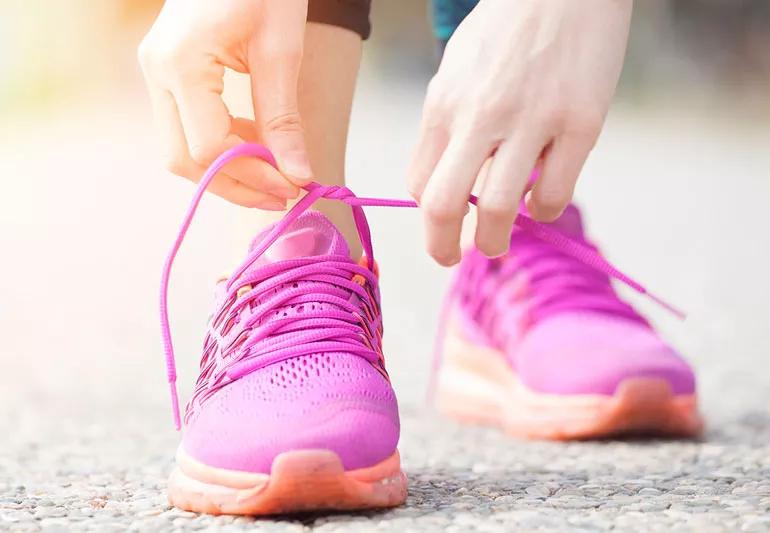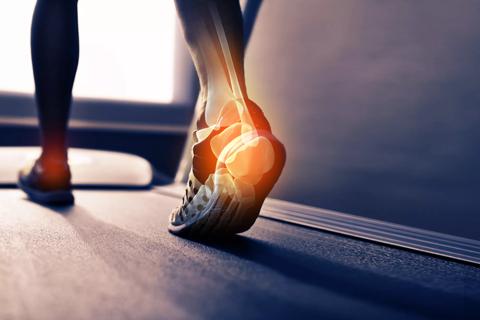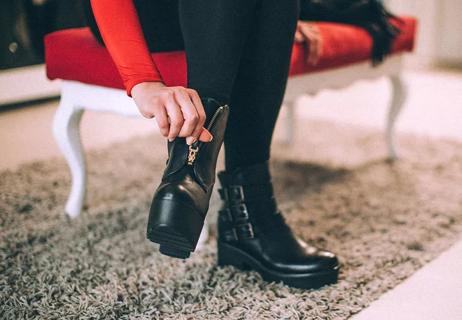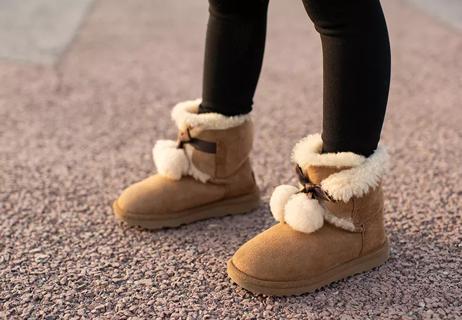Look for a pair that are functional and flexible

A form of exercise that almost anyone can enjoy in any season, walking is a heart-healthy aerobic exercise that reaps many health benefits. Though walking itself is free, the biggest investment you should make is finding the right pair of walking shoes to best support your feet and protect you from injury. Michele Dierkes, PT, DPT, ATC, offers advice on how to find the perfect pair.
Advertisement
Cleveland Clinic is a non-profit academic medical center. Advertising on our site helps support our mission. We do not endorse non-Cleveland Clinic products or services. Policy
When you walk into a sporting goods or shoe store and see rows upon rows of running shoes, how can you find the walking shoes within the mix?
Dierkes suggests starting by picking up shoes to see how they feel. “A typical walking shoe is meant for comfort,” she says. “It must absorb 1.5 times your body weight when you walk, so it is designed to cushion the foot.”
Another test to find a walking shoe is trying to bend the shoe in half. Walkers are heel strikers, so finding a shoe that flexes across the entire foot is important, Dierkes explains. The midsole, located on the inside of the shoe underneath the liner, should be made of light, pliable material—usually ethyl vinyl acetate (EVA). Look for flex grooves on the outsole.
Running shoes tend to be stiffer and more durable than walking shoes. Developed using more technology for different running and foot types, the midsole of running shoes is usually made of more durable material, like polyurethane, Dierkes says. The denser midsole offers more support especially for those people with flat feet.
There is no single prescription for the best shoe, because everyone’s feet are different. “I encourage fitness walkers to get running shoes, because they provide more support,” Dierkes says.
Advertisement
She even recommends getting fitted at a specialized running shoe store instead of your local sporting goods store. “They can tell by your gait whether it’s the right shoe for you,” Dierkes explains. If you have a history of injury or orthopaedic issues, see a physical therapist (PT) first. “We can take measurements and help you understand your foot mechanics, so you know what type of shoe will help prevent future injuries,” she says.
This article was adapted from Cleveland Clinic Heart Advisor.
Advertisement
Learn more about our editorial process.
Advertisement

Pick shoes that make your feet happy and are good for your overall health

Help for plantar fasciitis, neuroma, bunions and more

Choose fit and function over fashion

If they don’t fit well in the store, they won’t fit any better at home

The lack of arch support in the popular footwear can lead to numerous aches and pains

The flu, RSV, COVID-19, pneumonia and more typically circulate during cold weather months. I added this change

Type 2 diabetes isn’t inevitable with these dietary changes

Applying a hot or cold compress can help with pain